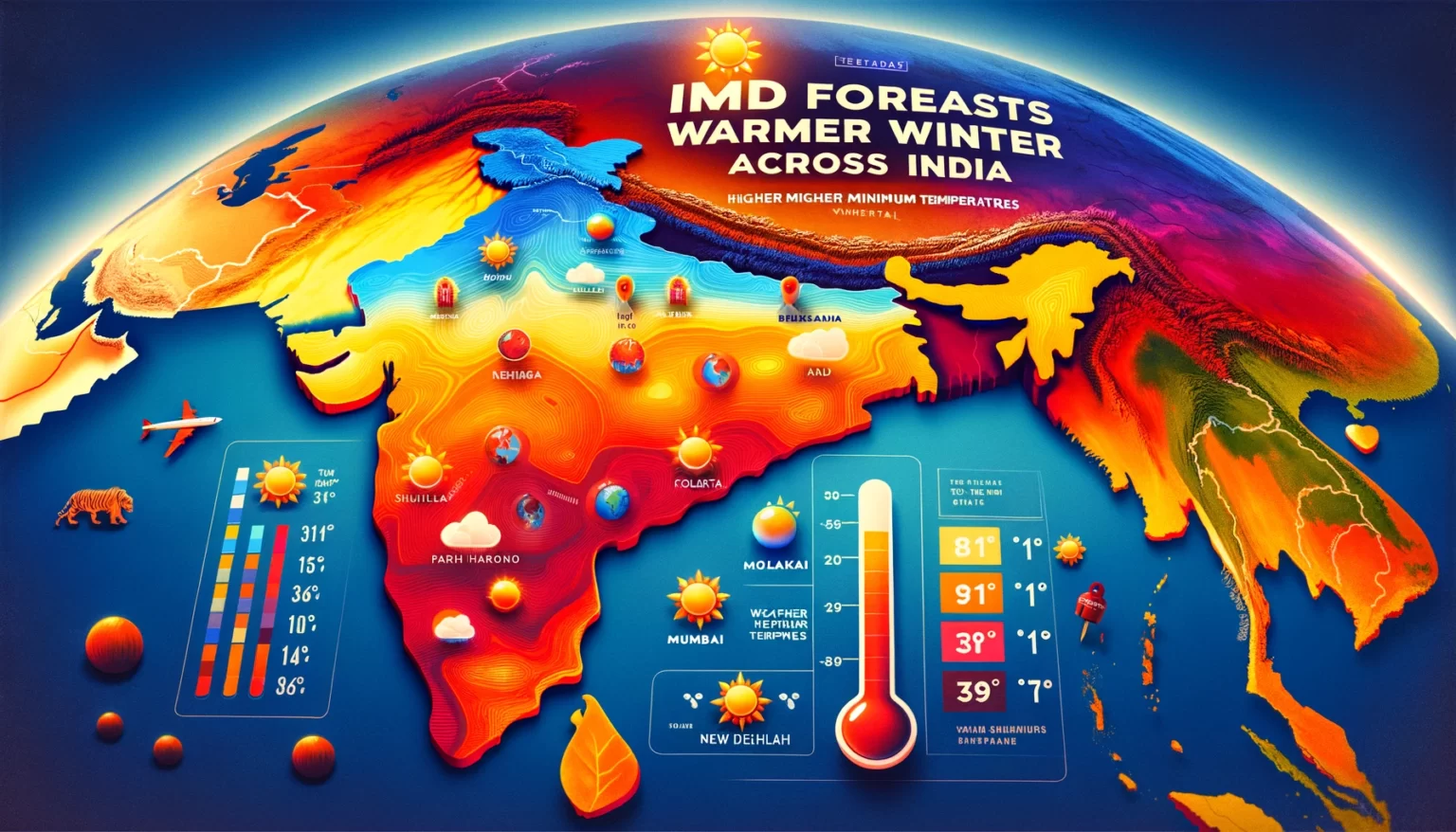Warmer Winter in India
This article argues that winters in India are progressively getting warmer, a situation that has large ramifications on environmental conditions, agricultural production and climate change generally. This paper discusses the causes that may be attributed to the winter warming phenomenon in India, the consequences that stem from this change, and possible implications in the future.
Factors Associated with Winter Warming
Climate Change
That shift in climate unquestionably remains a dominant force behind the increasing winter temperature, not only worldwide but in India too. Carbon dioxide such as the gas emitted by cars and other vehicles warm the atmosphere and also methane which is produced when food is produced and decomposes warm the atmosphere in general.
El Nino
El Nino is a climatic phenomenon characterized by the warming of sea surface temperatures in the central and eastern Pacific Ocean. It disrupts normal weather patterns and can lead to warmer winters in regions like India.
Melting of Antarctic Sea Ice
The melting of Antarctic sea ice contributes to changes in oceanic and atmospheric circulation patterns, which can impact global temperatures and lead to warmer winters in regions far from the poles.
Increased Solar Activity
Periods of heightened solar activity can lead to an increase in the amount of solar radiation reaching Earth, contributing to short-term warming effects.
Volcanic Activity
Volcanic eruptions can inject large amounts of ash and sulfur dioxide into the atmosphere, which can have a cooling effect by reflecting sunlight away. However, the long-term impact of volcanic activity on climate is complex and can contribute to warming as well.
Cutting Aerosol Pollution
Aerosols reflect sunlight and cool the atmosphere. Reducing aerosol pollution can lead to a warming effect because it decreases the reflective particles in the atmosphere.
Impacts of Winter Warming
Extreme Heat
Warmer winters contribute to the overall increase in global temperatures, exacerbating extreme heat events in the summer. This can lead to heatwaves, which are harmful to health and agriculture.
Changing Rainfall Patterns
The warming of winters affects monsoon patterns, leading to irregular rainfall. This can result in flooding in some areas and droughts in others, disrupting water supply and agriculture.
Droughts
Warmer winters can reduce snow accumulation in the Himalayas, which feeds many of India’s rivers. Reduced snowmelt can lead to water shortages and drought conditions during the summer months.
Agriculture and Food Security
The agricultural sector is highly sensitive to temperature changes. Warmer winters can lead to the early onset of flowering and harvesting seasons, which can disrupt crop cycles and reduce yields, affecting food security.
Glacier Melt
Increased winter temperatures accelerate the melting of glaciers in the Himalayas, which can lead to rising sea levels and reduced freshwater availability.
Sea Level Rise and Related Issues
Warmer winters contribute to the overall melting of polar ice, leading to rising sea levels. This can cause coastal erosion, increased flooding, and displacement of communities.
Migration and Conflict
Climate-induced changes such as water shortages and reduced agricultural productivity can lead to migration and conflict over resources.
What Does a Warmer Winter Mean for Indian States?
A warmer winter in Indian states mean lack of respite from hot summer temperatures that are experienced throughout the rest of the year. It can also have manageable environmental and socio-economic impacts, which include water deficit, low crop yield potential due to reduced temperatures, and high incidences of heat related diseases.
‘Global Drought Snapshot’ by UNCCD
The global picture of drought presented by the United Nations Convention to Combat Desertification allows users to identify the world’s most threatened regions by water scarcity and learn ways those effects can be lessened.
Key Highlights of the Report
- Regions Affected: The report identifies regions most vulnerable to drought and provides data on the frequency and severity of drought events.
- Impact on Agriculture and Forests: Droughts severely impact agriculture and forest ecosystems, leading to reduced productivity and increased vulnerability to wildfires.
Remedies Highlighted in the Report
- Sustainable Land Management: Promoting practices that enhance soil moisture retention and reduce erosion.
- Water Conservation: Implementing efficient irrigation systems and rainwater harvesting.
- Drought-Resilient Crops: Developing and planting crops that can withstand prolonged dry conditions.
Katabatic Winds
Role of Katabatic Winds
Katabatic winds are downslope winds that carry high-density air from higher elevations to lower elevations. They can influence local climate conditions, including temperature and precipitation patterns.
Iceland Volcano Eruption
Iceland is known for its volcanic activity due to its location on the Mid-Atlantic Ridge. Volcanic eruptions can impact global climate by injecting ash and gases into the atmosphere.
Types of Volcanoes
- Shield Volcanoes: Broad, gently sloping cones formed by the eruption of low-viscosity lava.
- Stratovolcanoes: Steep, conical volcanoes built up by many layers of hardened lava and tephra.
- Cinder Cone Volcanoes: Simple, small volcanoes formed by the eruption of lava fragments.
The Pacific Ring of Fire
This region is a major area in the basin of the Pacific Ocean where many earthquakes and volcanic eruptions occur.
FAQ
Are Winters Getting Warmer in India?
Yes, winters in India are getting warmer, with increasing average temperatures observed over the past few decades.
Which is the Warmest Place in India in Winter?
Mumbai is often considered the warmest place in India during winter, with temperatures rarely dropping below 20°C.
What is the Warmest Year in India?
The warmest year on record in India was 2016, followed closely by 2020, according to the India Meteorological Department (IMD).
Conclusion
Warmer winters in India are a significant indicator of broader climatic changes impacting the country. Understanding the factors contributing to this trend and its far-reaching impacts is crucial for developing effective mitigation and adaptation strategies. As global temperatures continue to rise, addressing these challenges will be vital for ensuring sustainable development and environmental stability in India.
